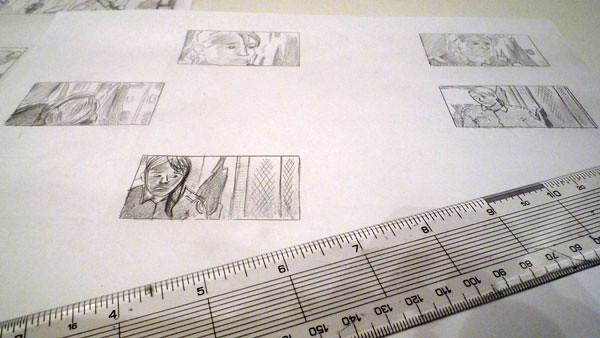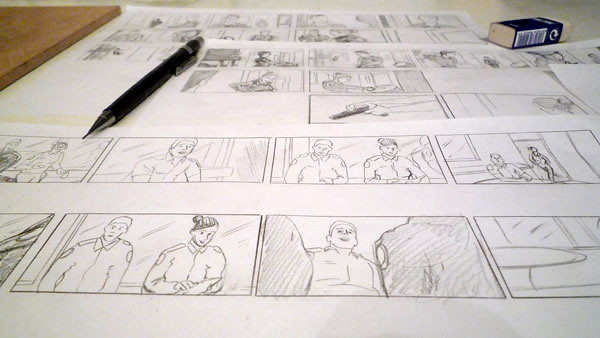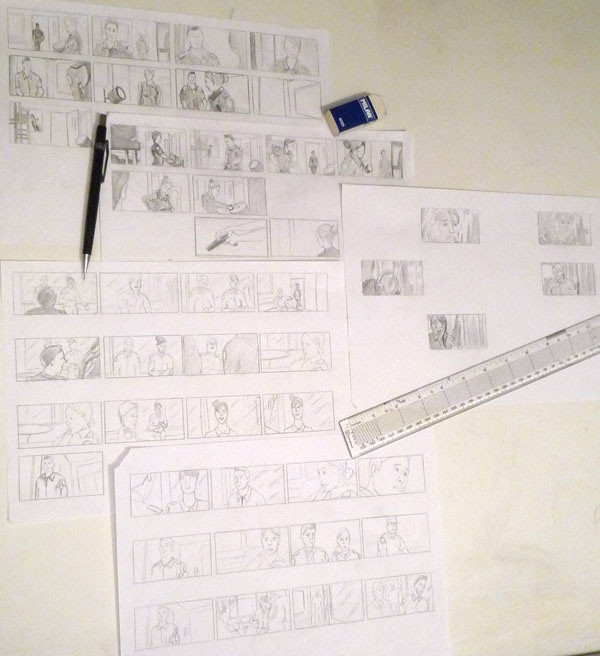
Storyboarding has always been a standard, essential part of my process as an animator. Increasingly with live action shoots I find it helps to work things out in advance by boarding sequences as I would on an animated project.

The main difference is that I don't go into performances as much as I do with animation boards. That's what the actors bring on shoot day. The main purpose for live action boards is for me to figure out coverage - ie how many shots I need to tell the story, the type of shots that work best to create the feeling I want and then from a purely practical point; simply to figure out how to stage things interestingly without confusing the audience.

That last point is particularly relevant when staging a conversation between several characters in one room.

Any story artist will tell you that storyboards aren't meant to be pretty. They're functional pieces of visual reference designed to provide clear staging and direction to help tell your story. The process can be so iterative, it's best to keep things simple and free of detail. I scrapped four rounds of boards (about a hundred different drawings each time) before settling on the final configuration.

I have Sherm Cohen to thank for his terrific guidance on storyboarding - I've learned a tonne from this guy over the years. He's also a top bloke to hang out with in person.





